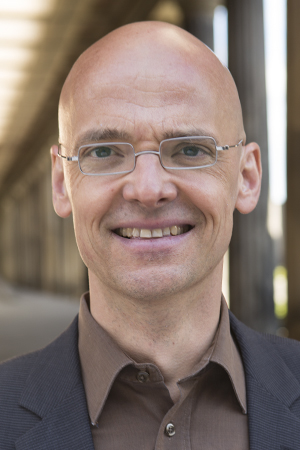Enjoy a private tour to Lutherstadt Wittenberg: your personal DriverGuide will take you past Potsdam and into southern Brandenburg to this medieval jewel sitting on the Elbe River. This town is seen by many as the birthplace of Reformation.
October 31 each year marks the anniversary of the posting of Luther’s theses in 1517. Legend has it that he nailed them onto the door of the palace church in Wittenberg half a millennium ago. True or not, it is the theses in themselves that set off the reformation process in a larger scale. A process of renewal not only within the church but also for the constitution of the German States and for society at large. Starting as a protest against the selling of indulgences by the church this movement reverberated throughout Germany, Europe and beyond.
Or choose your favorite guide to send an inquiry
Don’t want to choose your guide yourself?
On arrival your private guide will take you on a walk through the historic center. On a stretch of around 3,000 feet (one kilometer) the main attractions of Wittenberg are all lined up: the palace church, Luther House, St. Mary’s Church, Melanchthon House and the house and studio of the Cranachs.
Your exploration will begin at the very place where Luther made public his protest: the door of the palace church. Should you so wish, you can visit the inside of the palace church where you will find the burial site of Martin Luther. This visit is only available by taking part in a public guided tour.
Strolling down the main street you will come to see the historic market square with the beautiful 16th century Renaissance town hall as well as the Houses of Cranach and the Cranach Courtyard. This is where the famous painters Lucas Cranach the Elder and the Younger lived and worked. Most of the historic portraits of Luther which easily come to mind are works of Lucas Cranach the Elder. His works can be seen as the pictorial outpouring of the spirit of Reformation. Furthermore, along with publisher Christian Döring, he ran a printing press in this house where Luther’s translation of the New Testament was published, a version also known as the „September Testament“.
The next stop will be the City and Parish Church of St. Mary, a site where Luther gave countless sermons. Johannes Bugenhagen, another of Luther’s spiritual companions, explained the gist of the Reformation to the congregation of this church. It is the oldest building in Wittenberg and one of the several UNESCO world cultural heritage sites in the city. The altar was designed by Lucas Cranach and there are several of his paintings to be seen. Don’t miss the extensively decorated font by Hermann Fischer and the magnificent organ. The adjacent vestry is today used for exhibitions of contemporary art.
Another significant contributor to Reformation is Philip Melanchthon, whose life and work you can discover in Wittenberg. Also known by the epithet Praeceptor Germaniae (Teacher of Germany), he reformed the educational system and was one of the most outstanding university professors of the time. Your guide will take you to Melanchthon House, renowned for its architecture. It is here that the reformer and humanist lived and worked from 1539 until his death. Today it hosts the exhibition: „Philip Melanchthon: Life – Works – Impact“.
Undoubtedly, for most the highlight of this trip will be a visit to Luther House. The former residence of Martin Luther today hosts the largest museum on the Reformation worldwide. Originally consecrated as an Augustinian monastery, it was later given to Martin Luther who lived here with his wife and family.
The exhibition takes you back in time to the Reformation. There are some 1,000 artifacts on display, which not only portray Luther’s work as a reformer, but also enable insights into his family life and reflect his influence on the course of history. The artifacts include manuscripts, books, prints, coins and furniture from nine centuries as well as the original pulpit of the palace church where Luther gave sermons. And last but not least you will see Luther’s dining room, where he held his famous table talks.
If your time allows, there is more to see in Wittenberg: the Lutheroak where Luther burned the papal order threatening his excommunication, the historical site of Wittenberg’s university Leucorea and a fascinating building in a very different style: the Luther-Melanchton-Gymnasium designed by Friedensreich Hundertwasser.
There are several special exhibitions in Wittenberg for the celebrations marking the 500th anniversary of Reformation in 2017. The artist Yadegar Asisi has set up a 360 degree Panorama of Wittenberg at time of Reformation, another highlight on display.
A full day trip to Wittenberg can be combined with visits to Leipzig, Dessau or the Wörlitz Park or as a stop on your way to Dresden. If you are looking for more Luther sites to explore in Germany, please inquire with your guide, he or she will be happy to make suggestions and help you with arrangements.










